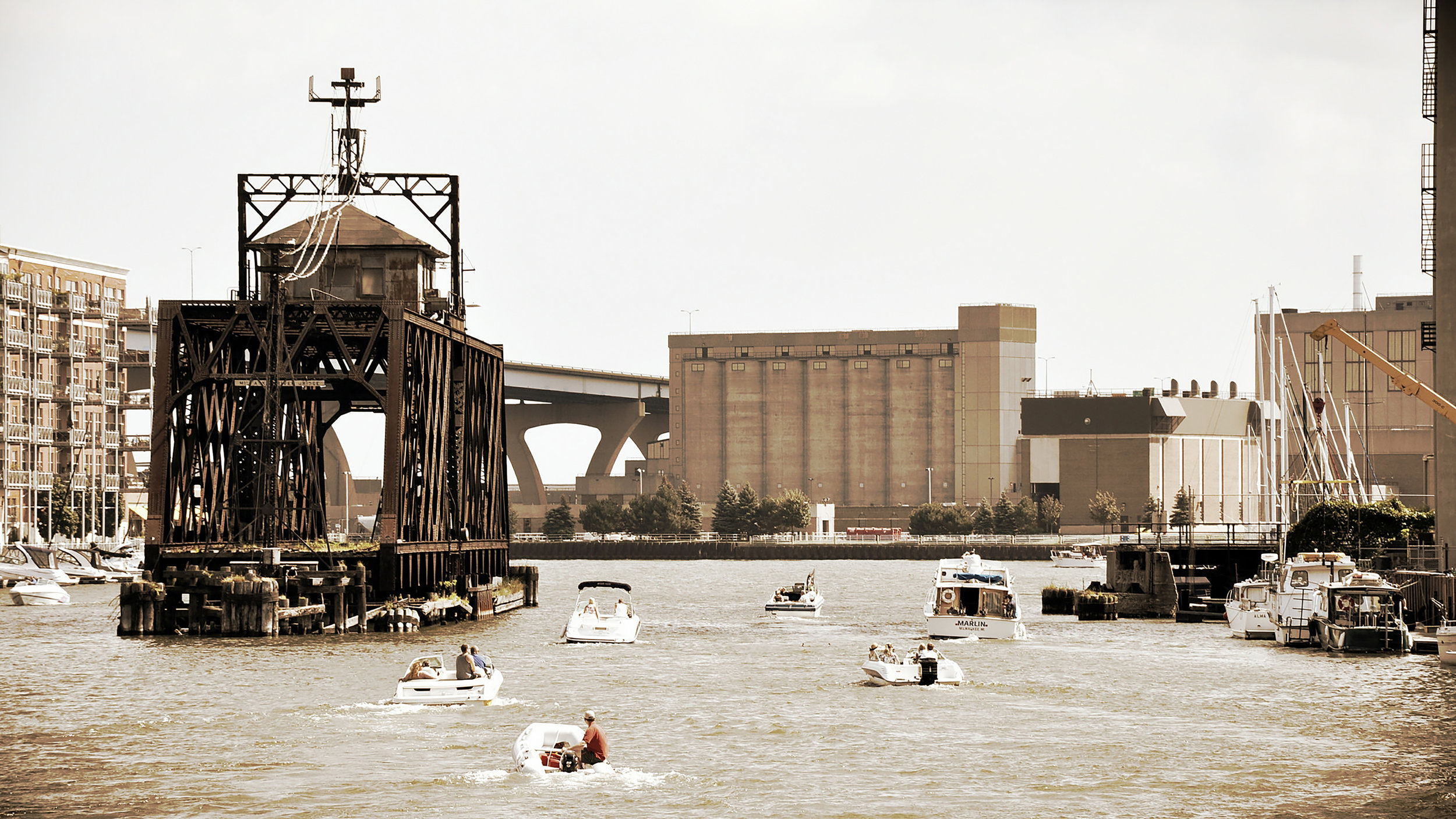
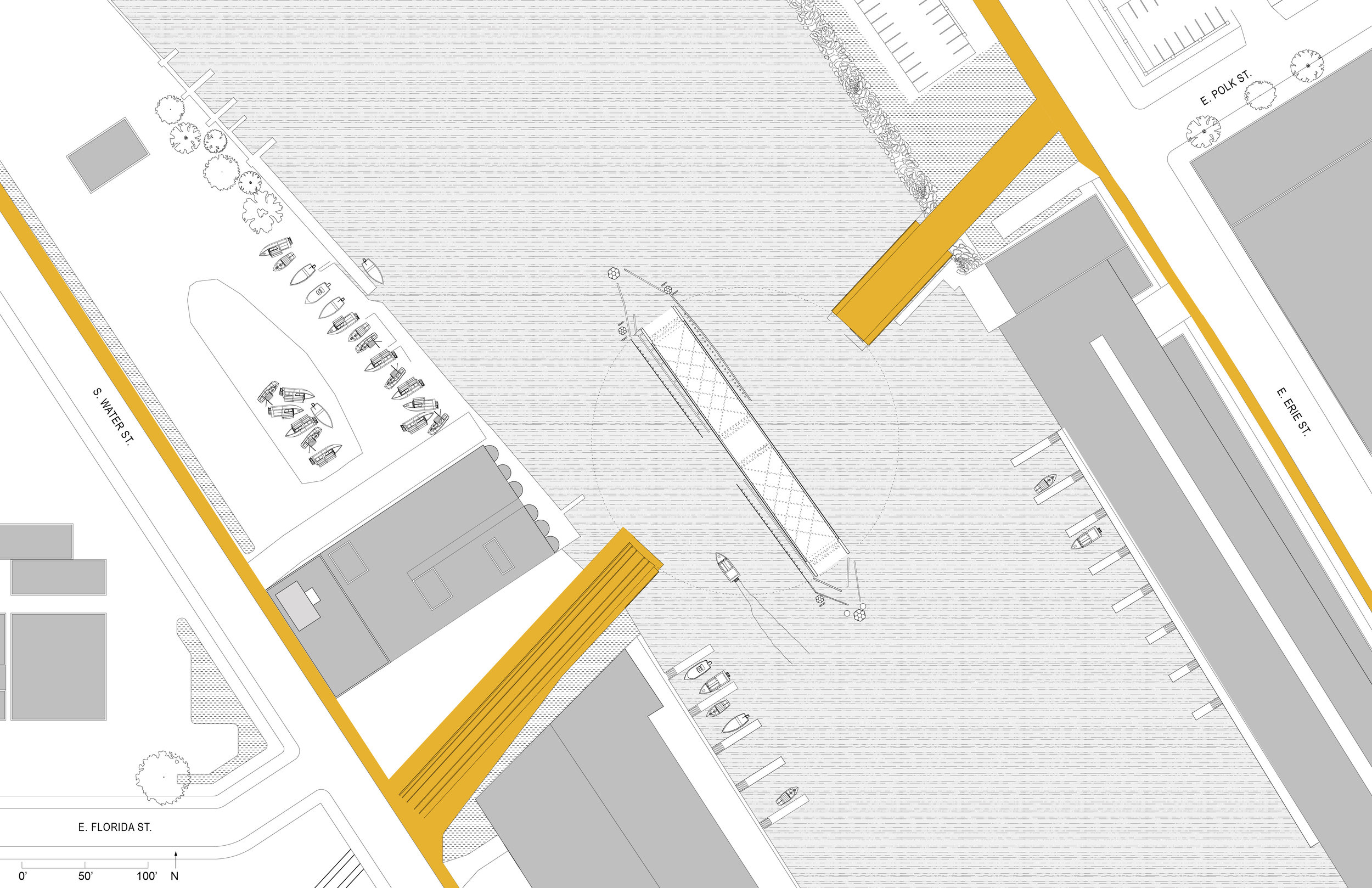

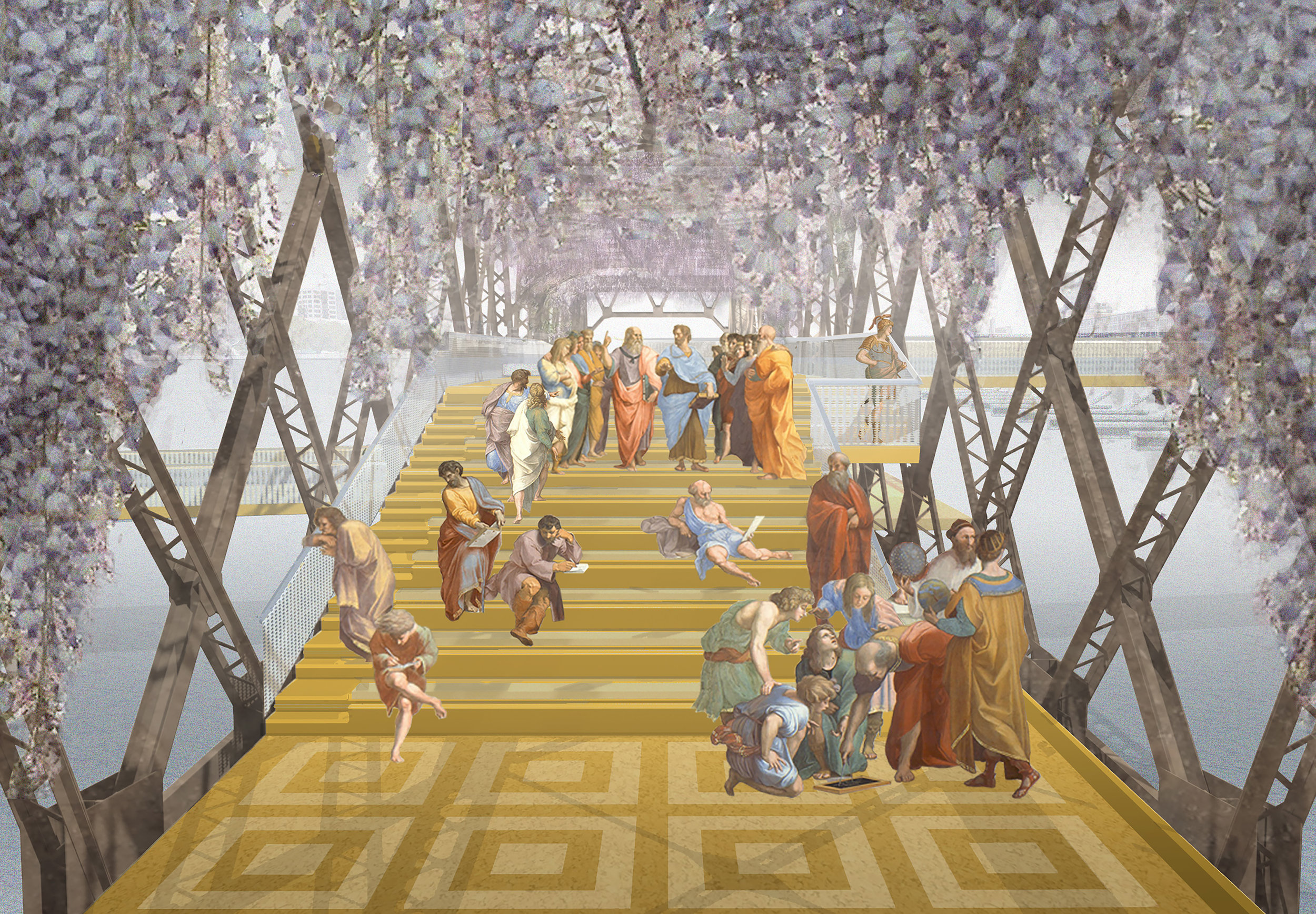

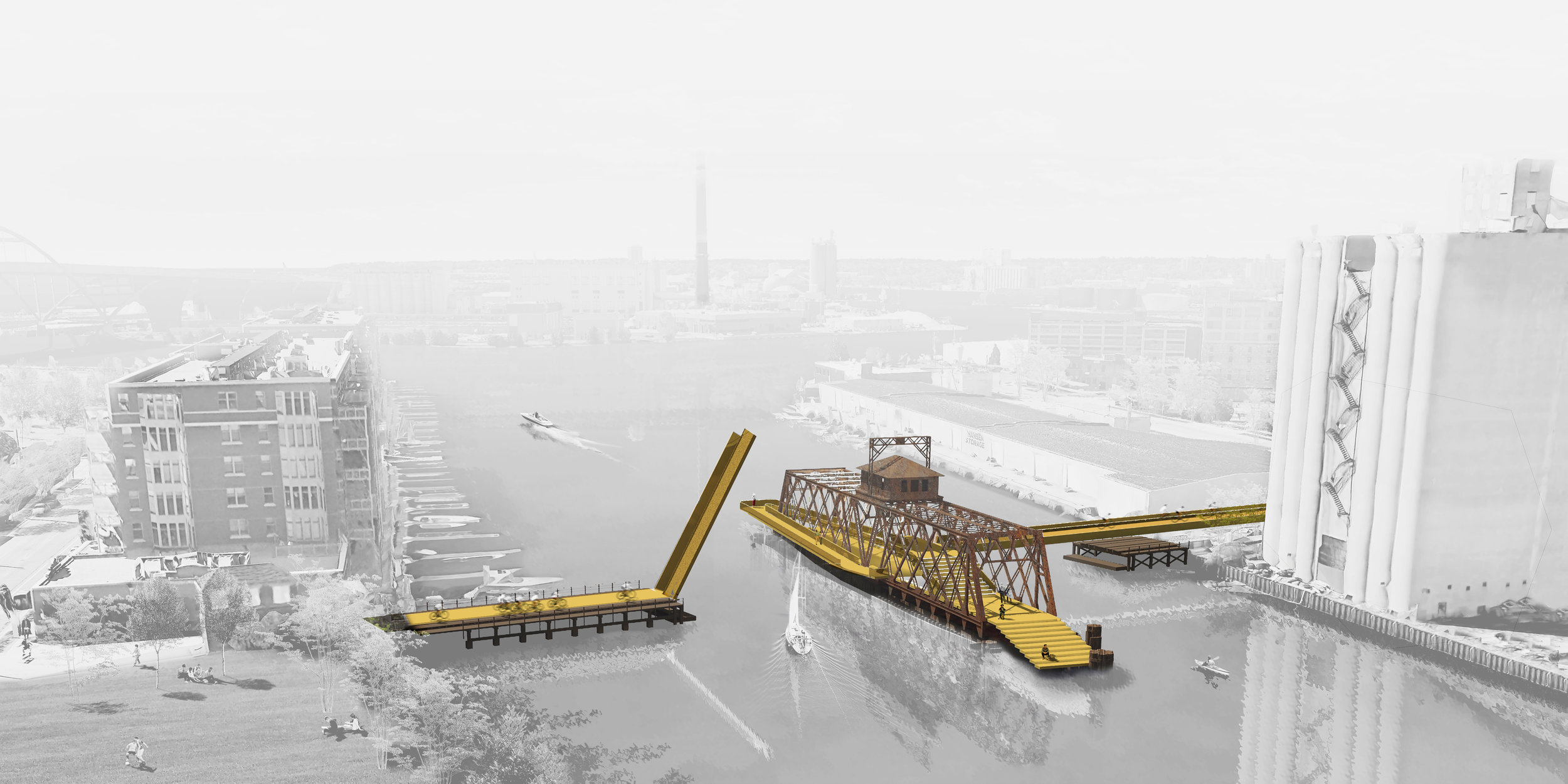
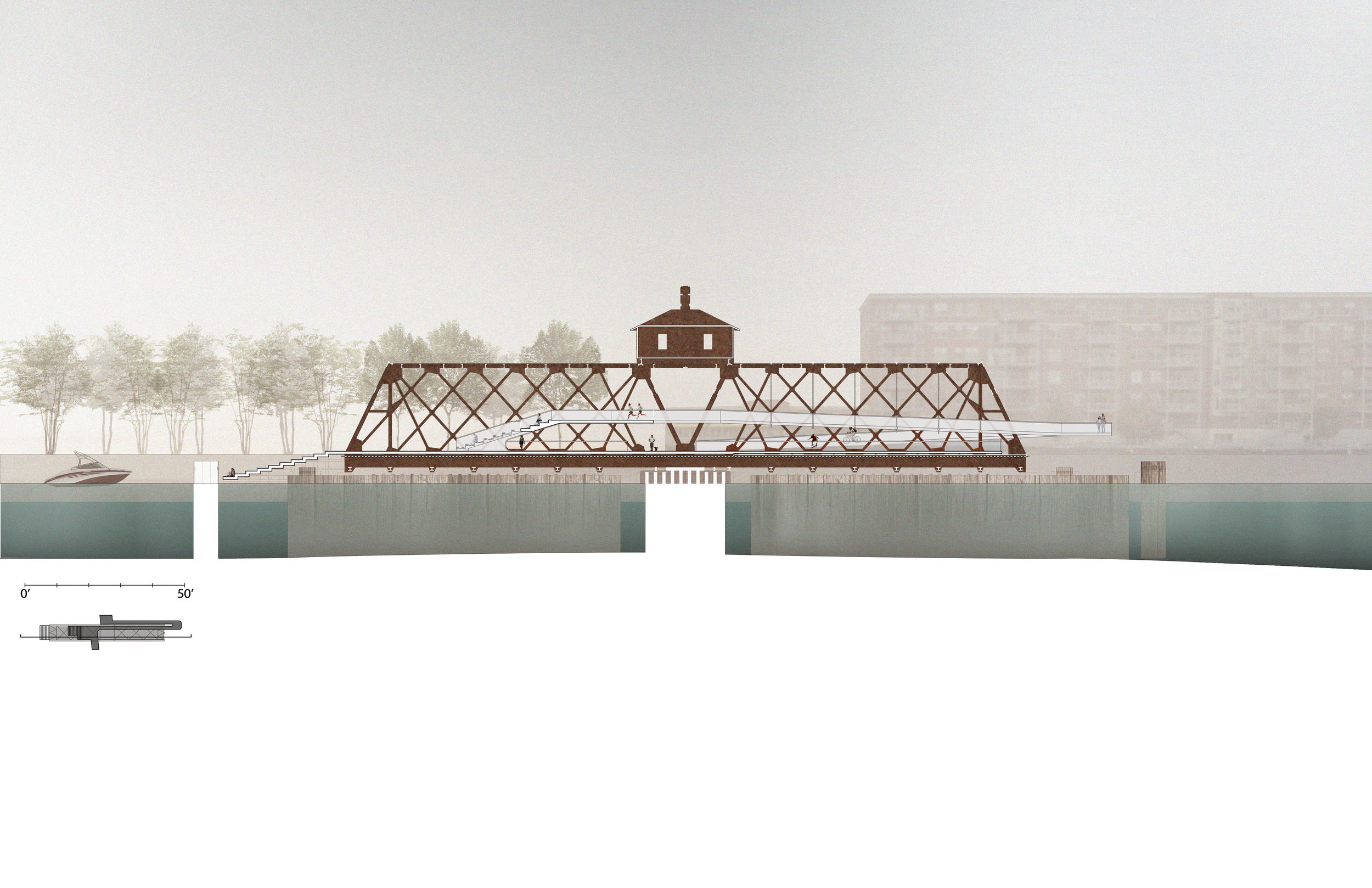
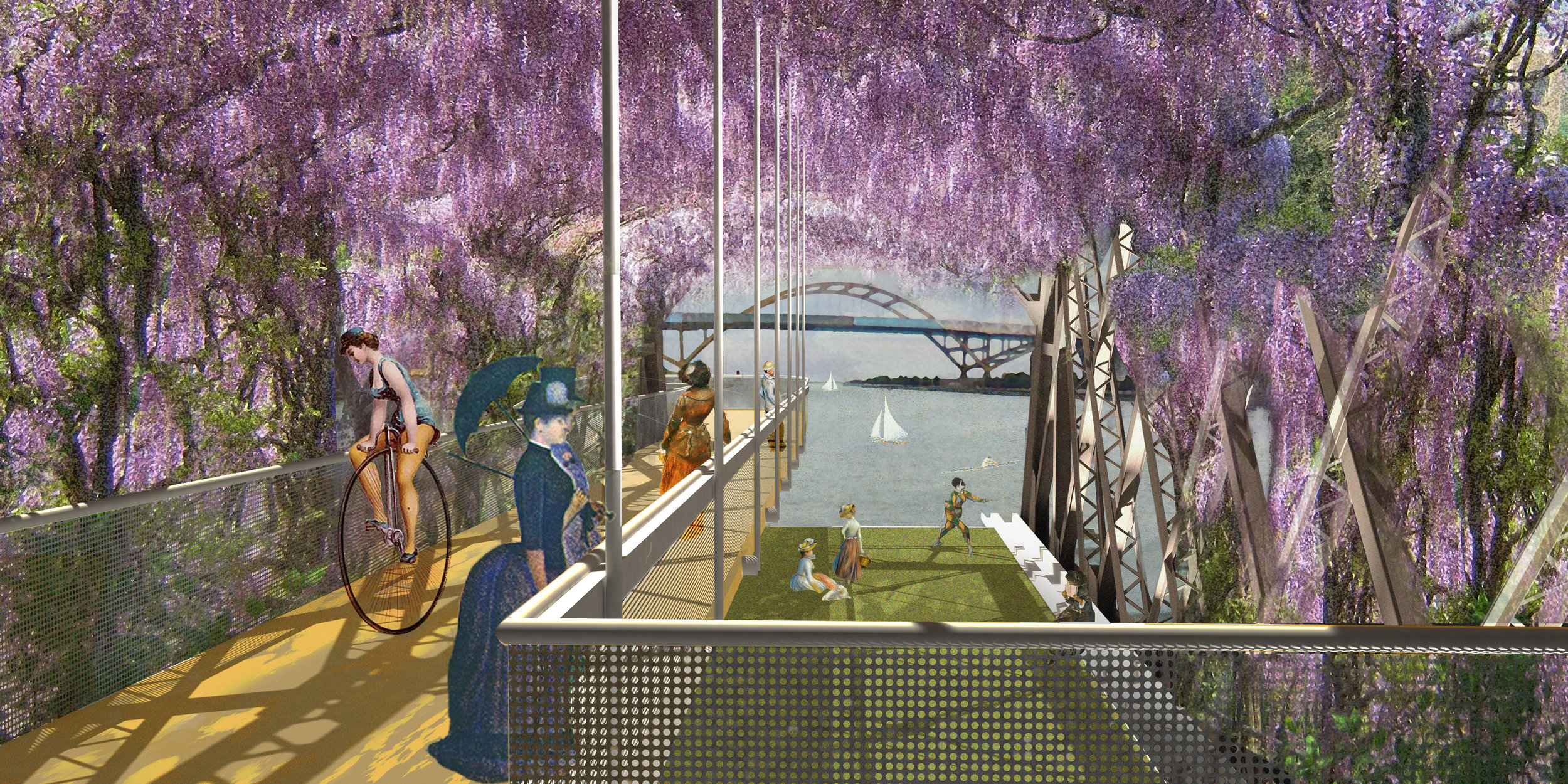
POLK FLORIDA BRIDGE
MILWAUKEE, WI
Giovanni Antonio Canal (Canaletto).
Capriccio of the Grand Canal with Imaginary Rialto Bridge. 1740
In 18th century Italian painting, a capriccio depicted the architecture of bridges, monuments, and infrastructure in fictitious perspective, often alongside ancient ruins. By representing contemporary architectural elements as immutably ancient, capriccios cast architecture as the medium of cultural memory, a substance at once recording our imagination of the past city, and projecting towards its future. Fantasy and function are intertwined, linked in a perpetual paradox, a seemingly unbridgeable divide, empowered by the potential of their juxtaposition. This proposal to inhabit a hundred-year-old Swing-Bridge spans this distance as a capriccio—layers of infrastructure composed as architectural fantasy.
The challenge of this brief: to restore an iconic rail bridge, today stranded at the neck of the Milwaukee River as little more than an obstruction to the current. It once connected Polk and Florida Streets, but has long since lost the ability to rotate. Robbed of its function, the industrial ironwork is paralyzed in place, calcifying the demise of the industries it once served. Just as the rotated bridge fails to span the river’s gap, so too does it open a passage between function and fantasy for us to traverse. Rather than valorize either, the project asserts that fantasy is born in the memory of function. A series of new pedestrian paths wend through the once stagnant scene, culminating in a verdant playground and terraced amphitheater. The dormant bridge becomes a public enfilade, completing a pedestrian circuit that frames the contemporary city in a rich fantasy of its past. The floating park, an architectural capriccio, binds together the two sides of this ancient opposition to imagine new functions in architecture’s capacity for fantasy.
